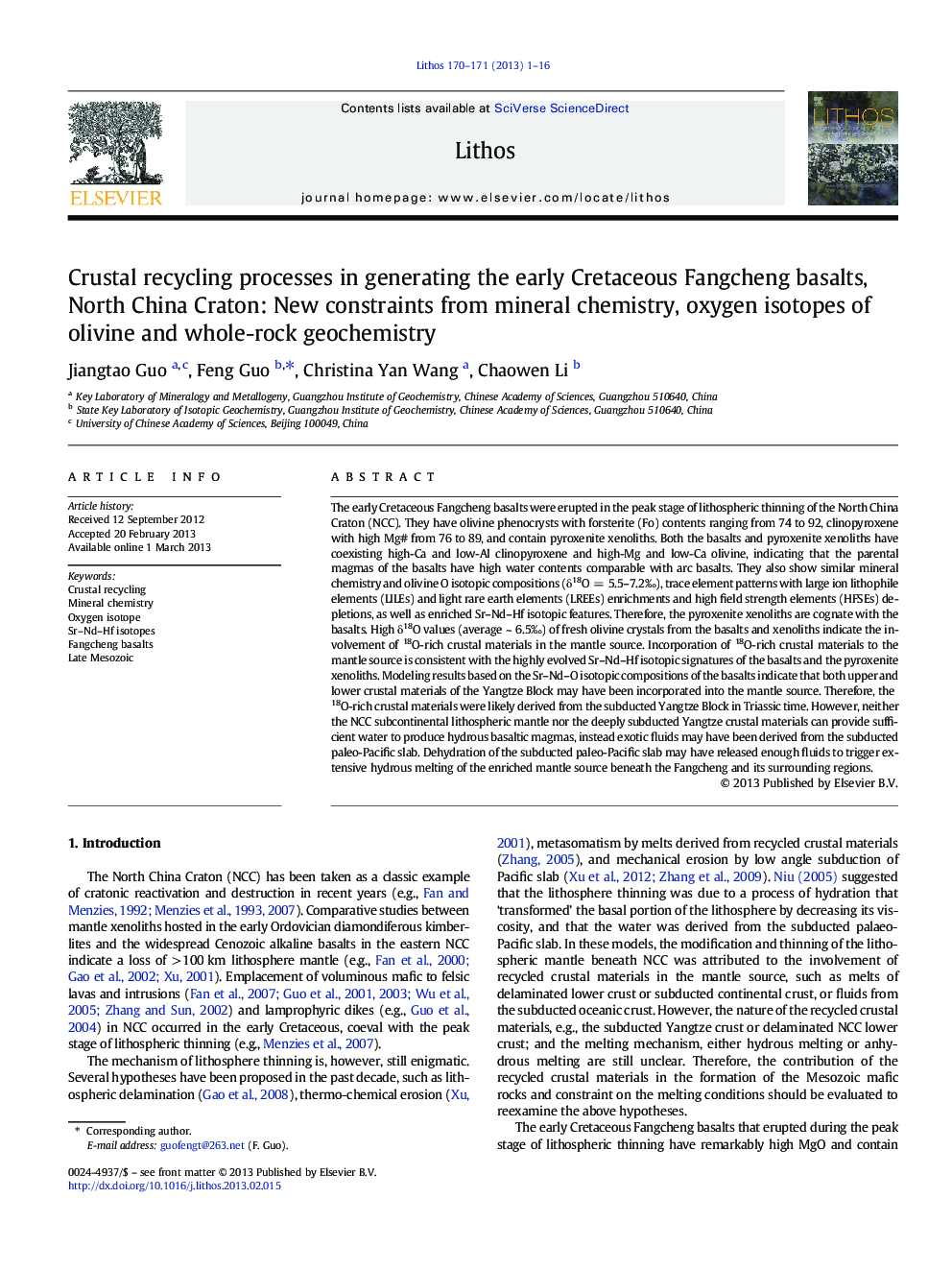| کد مقاله | کد نشریه | سال انتشار | مقاله انگلیسی | نسخه تمام متن |
|---|---|---|---|---|
| 4716228 | 1638692 | 2013 | 16 صفحه PDF | دانلود رایگان |

• The primary mantle-derived magmas for the Fangcheng basalts were rich in water.
• Both the Fangcheng basalts and pyroxenite xenoliths are cognate in origin.
• 18O-rich subducted Yangtze upper crust rocks were incorporated in the mantle source.
• Melting of enriched mantle source was triggered by exotic slab-dehydrated fluids.
The early Cretaceous Fangcheng basalts were erupted in the peak stage of lithospheric thinning of the North China Craton (NCC). They have olivine phenocrysts with forsterite (Fo) contents ranging from 74 to 92, clinopyroxene with high Mg# from 76 to 89, and contain pyroxenite xenoliths. Both the basalts and pyroxenite xenoliths have coexisting high-Ca and low-Al clinopyroxene and high-Mg and low-Ca olivine, indicating that the parental magmas of the basalts have high water contents comparable with arc basalts. They also show similar mineral chemistry and olivine O isotopic compositions (δ18O = 5.5–7.2‰), trace element patterns with large ion lithophile elements (LILEs) and light rare earth elements (LREEs) enrichments and high field strength elements (HFSEs) depletions, as well as enriched Sr–Nd–Hf isotopic features. Therefore, the pyroxenite xenoliths are cognate with the basalts. High δ18O values (average ~ 6.5‰) of fresh olivine crystals from the basalts and xenoliths indicate the involvement of 18O-rich crustal materials in the mantle source. Incorporation of 18O-rich crustal materials to the mantle source is consistent with the highly evolved Sr–Nd–Hf isotopic signatures of the basalts and the pyroxenite xenoliths. Modeling results based on the Sr–Nd–O isotopic compositions of the basalts indicate that both upper and lower crustal materials of the Yangtze Block may have been incorporated into the mantle source. Therefore, the 18O-rich crustal materials were likely derived from the subducted Yangtze Block in Triassic time. However, neither the NCC subcontinental lithospheric mantle nor the deeply subducted Yangtze crustal materials can provide sufficient water to produce hydrous basaltic magmas, instead exotic fluids may have been derived from the subducted paleo-Pacific slab. Dehydration of the subducted paleo-Pacific slab may have released enough fluids to trigger extensive hydrous melting of the enriched mantle source beneath the Fangcheng and its surrounding regions.
Journal: Lithos - Volumes 170–171, June 2013, Pages 1–16